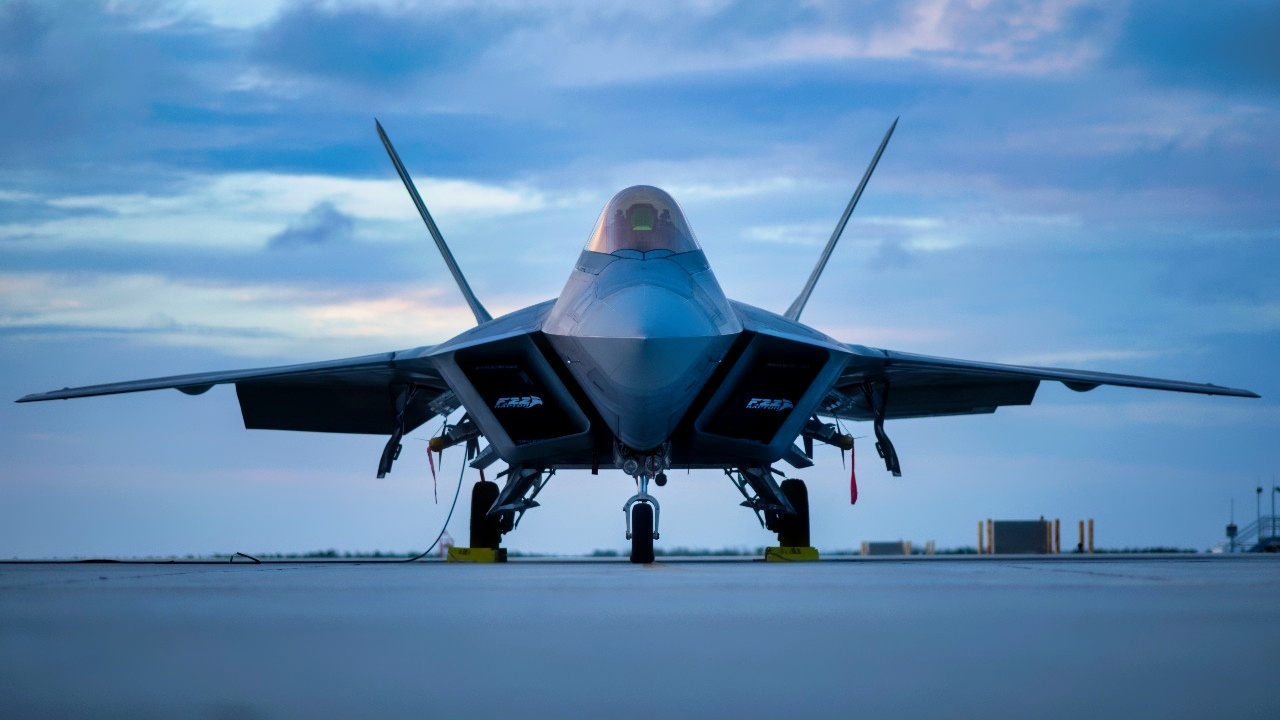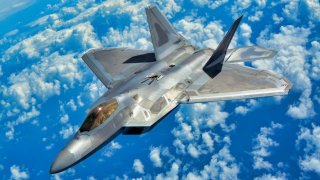The F-22 Raptor Is the Greatest Fighter Jet in 2024
The F-22 Raptor is widely considered the best fighter jet of all time, particularly for air superiority. Originally developed in the 1980s and 1990s, this fifth-generation jet incorporates cutting-edge stealth technology, thrust-vectoring engines, and a supercruise capability, enabling unmatched maneuverability and performance.
Summary and Key Points: The F-22 Raptor is widely considered the best fighter jet of all time, particularly for air superiority. Originally developed in the 1980s and 1990s, this fifth-generation jet incorporates cutting-edge stealth technology, thrust-vectoring engines, and a supercruise capability, enabling unmatched maneuverability and performance.
-While stealth reduces the F-22’s radar cross-section, the jet's impressive specs include dual Pratt & Whitney engines with a thrust-to-weight ratio of 1.25. Even decades after its creation, the F-22 remains unrivaled in air-to-air combat, establishing itself as the premier fighter jet globally.
F-22 Raptor: The Ultimate Air Superiority Fighter Still Dominates
What is the best fighter jet of all time?
The question gets debated in aviation circles the way that basketball fans debate MJ and Lebron. Debating the best fighter jet, like basketball, requires some clarification. Are we considering jets relative to their era and their peers?
Meaning, is the P-51 a “better” fighter than the Mirage 2000 because the P-51 was more impressive relative to its peers, even though the Mirage would dust a P-51?
Are we considering jets exclusively by function (Air superiority, close air support, SEAD)? Or by specific metrics (speed, radar, weaponry, combat kills)? The frame of evaluation can deeply dictate the answer.
Let’s consider the question on a continuous timeline, without factoring in era or peer relativity – a standard that will rank modern fighters above old warbirds, for example.
And let’s consider the question concerning the function that most people associate with fighter aircraft: air superiority. Narrowing down the consideration to air superiority is important, because different “fighters” can be asked to perform various roles.
If you need to loiter in a battle space, providing air to ground support to troops under siege, the A-10 Warthog is your best bet.
If you need, for some reason, to shoot down a satellite, you might want the F-15 Eagle. If you need data fusion and interconnectivity, you’ll want the F-35 Lightning II. And if you need to do a little bit of everything, you may consider the F/A-18 Super Hornet your best option.
But if you need to establish air superiority through air-to-air combat – the function that the general public most closely associates with fighter jets (likely thanks to Top Gun) – your best bet is the F-22 Raptor.
So, based on the metrics I’ve arbitrarily chosen to determine the best fighter jet of all time (a continuous timeline/air superiority), the F-22 is the best fighter of all time.
The F-22 Raptor Is Simply Amazing
Development of the F-22 began in the 1980s, with production beginning in the 1990s. And while the earliest run of F-22s are no longer cutting edge, the jet remains preeminent, and was clearly, well ahead of its time. When designers began creating the F-22, the challenge was to incorporate concepts that hadn’t been incorporated into a fighter jet before.
The F-22 “was a foray into the future where no one had gone before,” wrote pilot and engineer Patrick Bindner. “While it is almost everyday stuff now – it was nothing less than Star-Wars hardware in comparison with existing equipment at both L-M & the USAF [who] were learning how to do it as they went along that pathway. It was a piece of extreme exotica, using cost-is-no-object engineering & materials. It looks like an airplane, but it was the very first full-on stealth fighter.”
Indeed, the F-22 was ahead of its time; more than two decades later, the F-22 “is still not only fully relevant to its design goals, it is still unmatched in its combat niche.”
Stealth technology
One of the factors that makes the F-22 so impressive (and ahead of its time) is the use of stealth technology. As air defense systems become increasingly sophisticated, stealth is becoming a prerequisite for surviving in contested air space.
For an air superiority fighter, which must essentially clear out and gain superiority over contested air space, stealth is vital. The F-22 designers, presciently, recognized the future need for fighters to feature stealth technology. Vast amounts of research and development went into lowering the F-22’s radar cross section (RCS) without compromising the speed and maneuverability needed to be a lethal combat aircraft.
Several new features were designed into the F-22 to lower the jet’s RCS, including, the alignment of the jet’s edges, the continuous curvature of the surfaces, an internal weapons bay, fixed-geometry serpentine inlets, curved vanes to prevent engine face and turbine line-of-sight, and radar-absorbent materials on the jet’s exterior. Even the F-22 pilot’s helmet was designed to prevent a radar return.
“To achieve its stealth capabilities, the F-22 Raptor utilizes advanced composite materials, such as carbon fiber composites, which are lightweight yet strong,” wrote Laura Clery. “These materials help reduce the aircraft’s weight, enhance its maneuverability, and improve its overall performance.”

Advanced Specifications F-22 Stealth Fighter
Operating unseen is only part of the equation. Aside from stealth capabilities, the F-22 has an impressive set of specifications. For example, the F-22’s two Pratt & Whitney F119 augmented turbofan engines feature thrust-vectoring, which allows for hairpin turning, and a supercruise setting, which allows for supersonic speeds without the use of afterburners. Each engine has a maximum thrust of 35,000 pounds, allowing the F-22 to achieve a thrust-to-weight ratio of 1.25 with the afterburners engaged.
In all, the F-22 is highly aerodynamic, with relaxed stability, and with powerful engines – allowing for world-class maneuverability and energy potential across its entire envelope. The result is the world’s best air superiority fighter – and for the parameters of this article, the world’s best fighter.
About the Author: Harrison Kass
Harrison Kass is a defense and national security writer with over 1,000 total pieces on issues involving global affairs. An attorney, pilot, guitarist, and minor pro hockey player, Harrison joined the US Air Force as a Pilot Trainee but was medically discharged. Harrison holds a BA from Lake Forest College, a JD from the University of Oregon, and an MA from New York University. Harrison listens to Dokken.
All images are from the U.S. Air Force.


